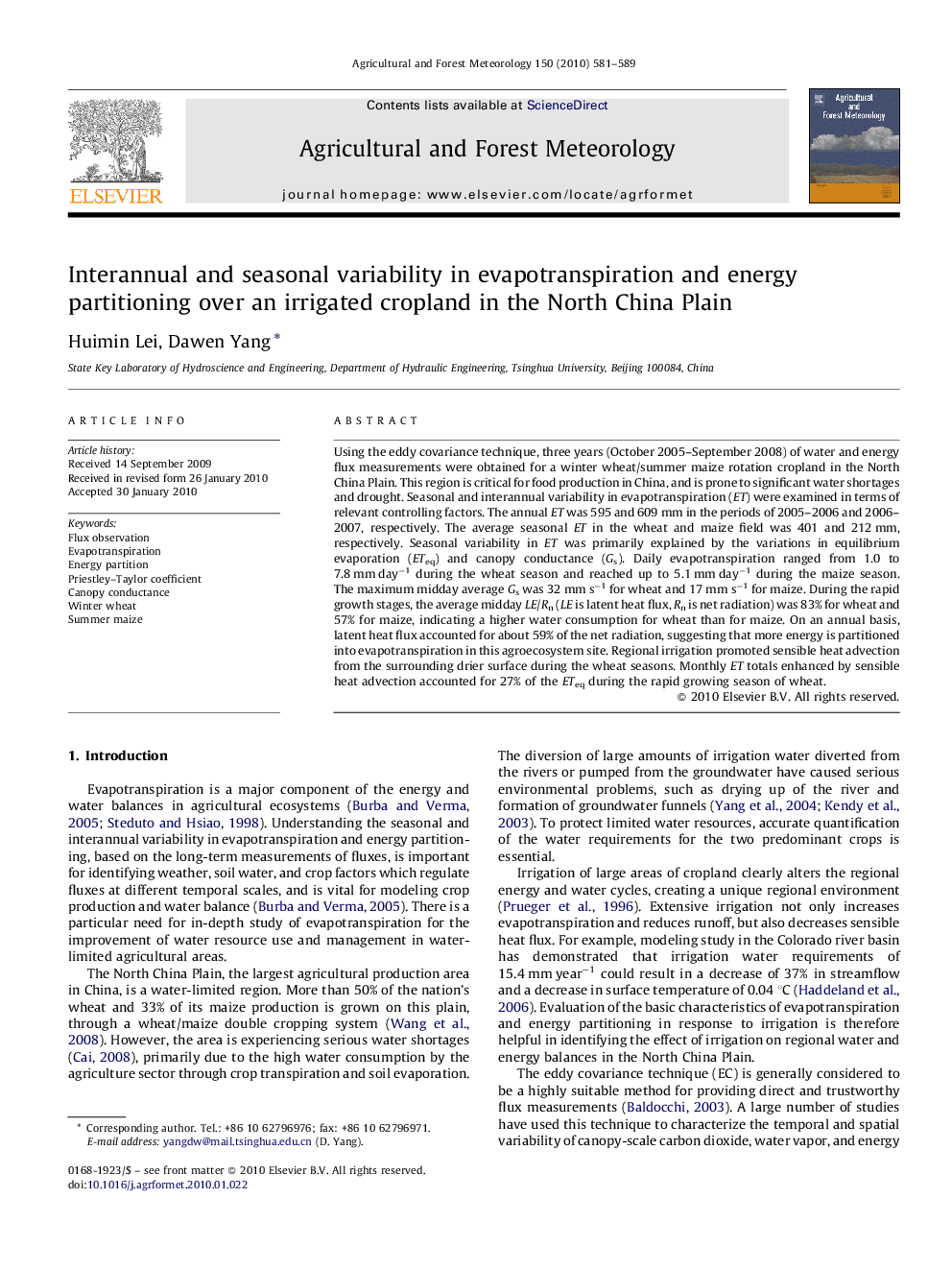| Article ID | Journal | Published Year | Pages | File Type |
|---|---|---|---|---|
| 82316 | Agricultural and Forest Meteorology | 2010 | 9 Pages |
Using the eddy covariance technique, three years (October 2005–September 2008) of water and energy flux measurements were obtained for a winter wheat/summer maize rotation cropland in the North China Plain. This region is critical for food production in China, and is prone to significant water shortages and drought. Seasonal and interannual variability in evapotranspiration (ET) were examined in terms of relevant controlling factors. The annual ET was 595 and 609 mm in the periods of 2005–2006 and 2006–2007, respectively. The average seasonal ET in the wheat and maize field was 401 and 212 mm, respectively. Seasonal variability in ET was primarily explained by the variations in equilibrium evaporation (ETeq) and canopy conductance (Gs). Daily evapotranspiration ranged from 1.0 to 7.8 mm day−1 during the wheat season and reached up to 5.1 mm day−1 during the maize season. The maximum midday average Gs was 32 mm s−1 for wheat and 17 mm s−1 for maize. During the rapid growth stages, the average midday LE/Rn (LE is latent heat flux, Rn is net radiation) was 83% for wheat and 57% for maize, indicating a higher water consumption for wheat than for maize. On an annual basis, latent heat flux accounted for about 59% of the net radiation, suggesting that more energy is partitioned into evapotranspiration in this agroecosystem site. Regional irrigation promoted sensible heat advection from the surrounding drier surface during the wheat seasons. Monthly ET totals enhanced by sensible heat advection accounted for 27% of the ETeq during the rapid growing season of wheat.
